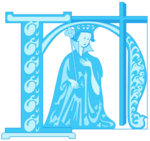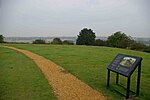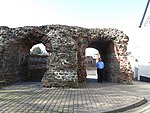Myland (also called Mile End) is a civil parish in Essex, England. It is now a northern suburb of Colchester. The original village began approximately one mile north of the centre of Colchester which probably accounts for its name. This has varied over the centuries but essentially with the same meaning. It is the only part of Colchester to be a civil parish.
Myland rises from about 19 metres in the south to about 50 metres in the north. It is within 30 minutes driving time of Sudbury and Ipswich.
The earliest record of the original village is from 1254 when Mile End became a separate church parish. In the English Civil War, Colonel Fothergill's fort, a major Roundhead stronghold was located in the village. Daniel Defoe held a long lease on Tubswick, an ancient house in the village which burned down on 7 December 2009. He is said to have leased Tubswick for his daughter. His book "Moll Flanders" mentions Mile End.
Colchester Borough Council has granted planning consent to two major housing developments in Myland, totalling more than 3,000 homes. These decisions have provoked strong local opposition. The larger development, of 1,600 homes, is on former rose grower Cants of Colchester greenfield land and is to include a new primary school, secondary school, and a retail area. The smaller development will add some 1,500 new homes on the former Severalls Hospital site, plus a primary school and community centre.
Myland Community Council, founded in 1999, represents the Myland community. Its Clerk and Responsible Financial Officer is Katherine Kane. The council is chaired by Alison Jay.
The parish has two public houses, 'The Bricklayers' and 'The Dog and Pheasant', as well as three churches/chapels. These are St. Michael's Parish Church (Church of England), a Methodist chapel and a Catholic church. There are three primary schools: Myland Community Primary School (in Mill Road), Queen Boudica Primary School (off Turner Road) and Camulos Academy (off Via Urbis Romanae). There is also a new secondary school, The Trinity School, which opened in September 2023. Both Colchester General Hospital and the private Oaks Hospital are to be found in the parish.
Despite its size, Myland has no community centre but does have two areas of playing fields, both of which are owned and maintained by Colchester City Council. To the west, Mile End Playing Fields offer facilities for football and cricket; while to the east, Mill Road Playing Fields are the former home of Colchester Rugby Club, with a 350-home housing development set to be built on the site.
Colchester United F.C.'s ground, Colchester Community Stadium, is situated on former Cuckoo Farm land in the north of the parish. The stadium holds 10,105 spectators, and has been home to the club since 2008.
The stadium is located beside the Colchester Northern Gateway Leisure Park, a £65million development featuring a variety of restaurants, a bowling alley, indoor golf, climbing centre, cinema, and a hotel. The development spans 10-acres, with the first establishment opening in July 2023.Colchester Sports Park is also located in Mile End, featuring 76-acres of both indoor and outdoor sporting facilities, including a cycle track, archery range, sports hall, gym, and both grass and artificial multi-use pitches. The facility opened in July 2021, and is also the home to both Colchester Rugby Club following their relocation from Mill Road Playing Fields, and Colchester & District Archery Club.Mile End was also home to Cants of Colchester, the oldest commercial rose growers in Great Britain, founded in 1765. The family-run nursery originally sold a variety of plants, seeds, bulbs and trees, until then-owner Benjamin Cant initiated a rose breeding programme in 1875 to cater for the increasing popularity of roses in the 1800s. By 1880, Cant had become a very successful rose exhibitor in England, with the firm becoming a household name in the horticulture industry, having introduced more than 130 new rose varieties since 1875. The business remained family-run from its 18th century inception until its closure in September 2023, with a 1,600 housing development built on the business’ former rose growing fields.










